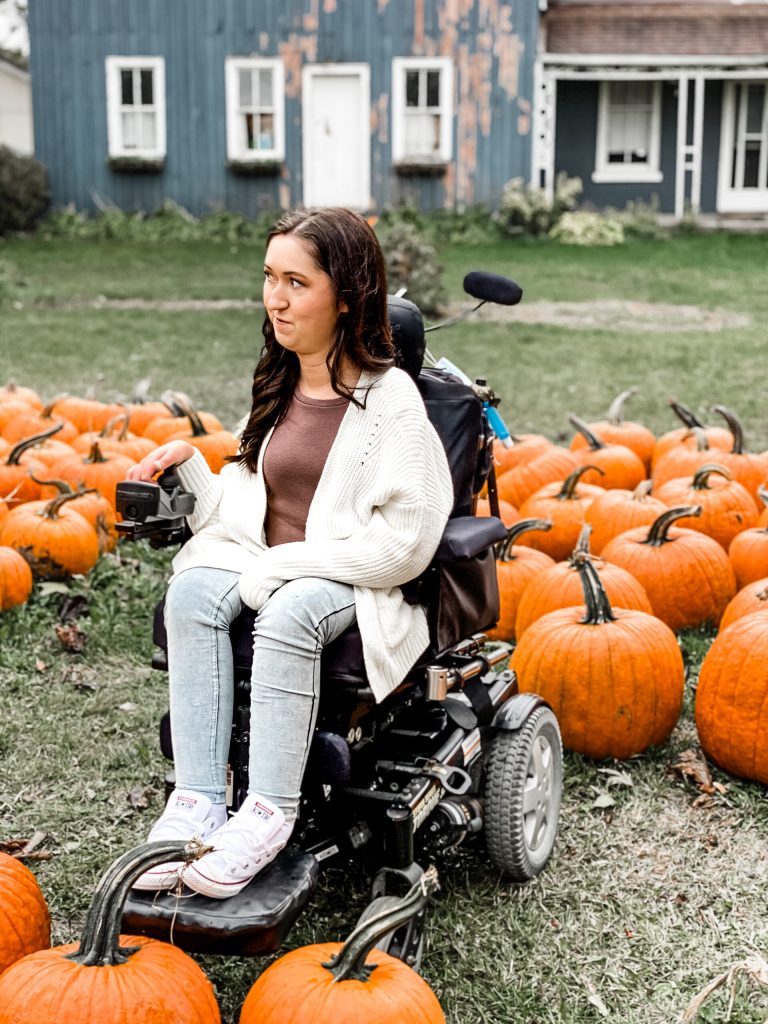5 Ways to Prepare for Moving Away to College as a Wheelchair User
Moving away to college as a wheelchair user can be incredibly daunting, but so exciting at the same time. Whether you choose to stay close to home or be as far away from family as possible, college will be a place where you find your independence, meet new friends, and discover what your true passions are in life.
Of course, as a student with a disability, there is a lot more planning involved in making this move successful. Housing, personal attendant care, classroom accommodations, accessibility on campus, financial security — the list goes on.
As a recent graduate who lived away from home for 5 years, here are some tips that may help you as you start your journey to post-secondary education.
1. START HAVING CONVERSATIONS WITH YOUR SCHOOL’S HOUSING DEPARTMENT IMMEDIATELY
If you’re planning to live away from home during your time at college, you will need to find suitable housing for your needs. Accessible housing can be incredibly challenging to find, so if possible, I would recommend staying in residence. Not only does living in residence make it convenient to meet new people and get to class, but colleges are often required to have a certain number of wheelchair accessible units and provide any other modifications you may need (this is rarely the case for off-campus housing).
I started having conversations with my school’s housing department before I was even accepted to the school, as I was very set on attending that college. Although it might not be necessary to start as early as I did, I do recommend setting up a meeting with them as soon as you can, but definitely before it’s time to actually apply to live there. A lot of schools give housing priority to students with disabilities, given that we can often only stay in specific dorm rooms due to our accessibility needs. As such, it is incredibly important that they know who you are before other students apply to live there.
I had several meetings with my school’s housing department before moving in. The first one was more of a general meeting and a tour of the different room options, but after that, we had several meetings to discuss modifications I needed them to make in order for the unit to be fully accessible to me. At this stage, I highly recommend taking a walk-through of your room several times in order to ensure the space will be 100% accessible to you. Remember, your family is not going to be living with you anymore, so you need to make sure you can navigate the space independently.
Here are some modifications you might need to ask for:
- Automatic door opener
- Roll under sink
- Roll-in shower
- Lowered light switches
- Wider door frames
- A ceiling track lift, especially if the room isn’t large enough to hold a portable Hoyer lift
- Lowered closet rods
- Removal of unnecessary furniture (for example, I asked my housing department to remove the bed as I brought my own hospital bed, and also had them remove the desk as it was too big for the space and impeded on my ability to turn around in the room).
- Roommate preferences — i.e., request to have no roommate if having one would be too challenging amidst your medical needs
- Extra keys to give to your personal care attendants
2. LINE UP ALL THE PERSONAL CARE SERVICES YOU WILL NEED
If you’re like me and need help with personal care and activities of daily living, you will need to line up these services well in advance of moving to college. Setting up these services will vary widely depending on where you are located and what funding options are available in your region, but in most of the US and Canada, adults with physical disabilities are eligible for either agency care or consumer directed care, which allows folks to hire and manage all of their own attendants (ultimately allowing us to have more autonomy and control over who is helping us day to day).
In both cases, you will need to apply for these services well in advance of moving to school. As reference, I applied for consumer directed care about a year and a half before I went to college. This process usually starts with a referral from your primary health care team, so it’s best to check with them regarding timelines in your area. Just remember to give yourself plenty of time. These things ALWAYS take longer than anticipated.
After you have received approval for these services and you are getting ready to move away to college, you will need to determine how you want to schedule your services based on your class schedule and your personal care needs. Everyone gets approved for a different number of hours based on the severity of their disability and what kinds of things they need help with in a day. If you receive 3 hours of care a day, your schedule is going to look much different than someone who receives 12 hours of care in a day. You will need to figure out a schedule that ensures all your needs are being met in the time you have allocated to you.
Here are a few tips you can consider utilizing if you need extra help in those ‘in between’ hours that you don’t have care:
- If needed, befriend a student in each of your classes that will help you get your books / electronics set up and put away each day. This will mean you don’t need to schedule a personal care attendant to drop you off and pick you up from class.
- Keep a checklist of everything you need your care attendant to do before they leave, like fill up your water bottle or place your snacks within reach. Run through this checklist a few minutes before their shift ends so you have everything you need while you’re alone.
- Make friends in your building, especially if you live in residence! Making friends in college is always a must regardless, but as a student with a disability, they might just be your lifeline when you need a quick hand.
3. APPLY FOR SCHOLARSHIPS & BURSARIES
Going to college is incredibly expensive — there’s no doubt about that. A lot of students tend to work multiple jobs while studying, just to keep up with their living expenses and avoid falling into endless student debt after graduation.
For myself, I knew this would not be possible. My disability severely affects my energy and stamina levels throughout the day and taking a full-time course load was already too much for my body to handle most days, never mind adding a job on top of that. Luckily, I did not have to worry too much about this, as I made it a priority to get as many scholarships as possible each year. Most years I had enough to not only cover my tuition in full, but also living expenses.
I’m not going to lie, applying for scholarships can be a lot of work, but most times the payoff is more than worth it. For example, one scholarship I applied for out of high school ended up providing me with $7,000 per year for my entire 4-year undergraduate program. This ended up totalling $28,000 by the time I graduated, all from one application which likely took me less than a weekend to complete. If you put your mind to it, you can likely improve your financial situation immensely without juggling jobs that will put your physical or mental health at stake. This is especially true given that as a student with a disability, you will have access to disability-specific scholarships that have lower competition.
4. SET UP YOUR ACADEMIC ACCOMMODATIONS
At this stage, you will have completed the most time-consuming steps of preparing to go to a college with a disability. However, there’s still a few more things you will likely need to line up before classes commence, such as making sure you have all your academic accommodations lined up prior to classes starting. Unlike high school, your college likely won’t set up everything — YOU need to be the one to advocate for yourself in order to ensure your success in the classroom.
I personally got in touch with my school’s academic accommodations office a month before school started. This allowed me time to gather all the doctors notes they required and have everything set up for the first day of classes. You don’t want to be dealing with stuff like this during your first few weeks of classes, when everything is crazy hectic as it is.
When going through this process, remember to not back down if there is something you really need, even if your school tries to convince you otherwise. I remember when I first met with my school, I told them I would need the ability to use an iPad for typing my exams as I don’t have the muscle strength to type on a regular keyboard. My facilitator insisted this was not possible, and that I would have to use a traditional keyboard or have a scribe (someone that writes what you verbally tell them to). I know that I have an incredibly hard time articulating my thoughts aloud and that my grades would suffer immensely if I were forced to take all my exams this way. I refused to settle for their arrangement (despite how adamant they were) and by the time midterms rolled around, they had agreed to purchase an iPad for me to use in the Testing Center.
Just remember that you know your body and mind best. If you know there is something that could make you more successful academically, fight for it. This is your education on the line, no one else’s.
4. GO FOR A TOUR OF THE CAMPUS & MAP OUT A ROUTE TO ALL OF YOUR CLASSES
A lot of college campuses are BIG. As a freshman, you’re bound to get lost, but navigating campus may be even more challenging with a disability. For example, it’s possible that not all building entrances will be accessible. You may find that you have to go the long way in some cases in order to avoid uneven ground or terrain. Some doors may have accessible door openers, others may not.
A few days before your classes start, I highly recommend blocking off an afternoon to explore campus. Head to each of your classrooms in order to determine the route you will be taking to get there, and how long you need to give yourself to get there each day. Jot down any barriers you run into so that you can bring them to the attention of your school, if needed.
Sometimes it’s also useful to go on an actual campus tour, so that you can be guided by others who know the campus well. My school actually offered an “Access Tour” which was a campus tour specifically designed for students with physical disabilities. On this tour they showed us barrier-free routes of travel, how to get to each building by going outside as little as possible (which is useful in the event of inclement weather), and where we can find elevators and accessible bathrooms in each building.
Overall, having an idea of where your classes are / how you will get there will significantly ease your stress when classes actually start.
Now, take a step back and breathe. You got this. I know that moving away to college with a disability is overwhelming, but I promise you it will be so worth it in the end. You truly have so many exciting adventures ahead of you!
If you want to chat more about college life, feel free to shoot me a message on Instagram or via the contact form on my website. My inbox is always open!


